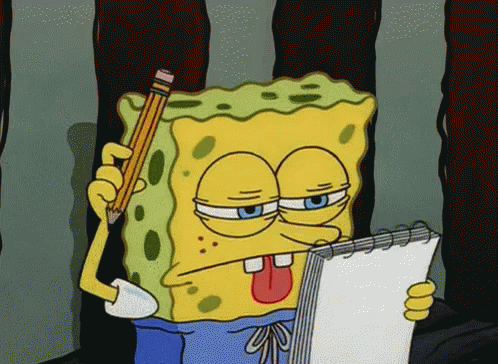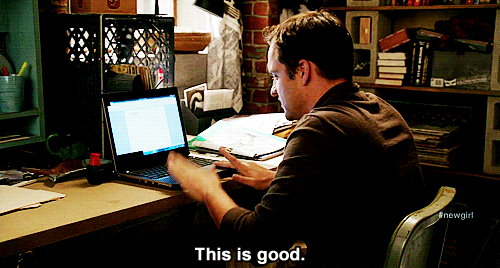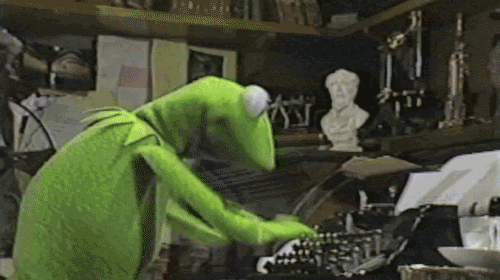Part I: Brainstorms & Bibles [+ story bible template]
Part III: Drafting & The Secrets of Time Management
Part IV: CPs, Beta Readers, & Alpha Readers
Hello, and welcome to my Youtube channel, except it’s not Youtube, it’s far worse. It’s reading. Anyway, STORYTIME:
When I was 9 or 10, I started writing a serialized story on a now-defunct writing website, sort of like an early Wattpad/uglier Fictionpress. My work became popular within the community, largely due to my frequent posting schedule and decent grasp of grammar. Standards were pretty low. Anyway, I garnered a miniature following, and by the seventh grade I had finished my first ‘novel’ at around 90k. I started work on a sequel immediately after, and was happily chugging along until one of my readers left the following comment: (paraphrased now, because I am old)
Why is there no plot? The characters are just wandering around. What’s the point of any of it?
Suffice to say, 12-year-old Lynn didn’t take too kindly to any sort of criticism. I was clearly some kind of freaky child-genius, why did I need plot? I lamented to my friends, spiraled as only a middle schooler can, and then promptly blocked the user.
There we go: that’s my darkest secret.
BUT. Within a couple months or so, while I was compiling my chapters into a ‘book,’ I realized my critic was right. This story that I wrote in random chunks every other week was kind of fun, but essentially incomprehensible. There was no structure, no goals, motivation, or conflict. In other words, it was a hot mess. And yes, I was 12, but I’m glad I learned my lesson early.
Pantsing doesn’t work. (At least not for me.)
So I learned how to outline. And then I learned how to like outlining. Ever since I’ve cemented my outlining process, writing books has been easier and faster, and the end result is always so much better. More coherent, more enjoyable, no quirky characters wandering around and occasionally fighting monsters. I think a lot of people shy away from the concept of ‘plotting’ because they see an outline as something that ties down your story and tamps down your creativity—but an outline doesn’t have to be law. It’s your world, my dude! You can change whatever you want whenever you want, from settings to character names to the whole damn plot. Because changing direction is easier when you have a roadmap for where you were already headed.
With that said, here’s an outline for how I outline.

chapter 1: plot progression & 3 act structure
Using pen and paper, I start by grabbing my trusty story bible and working out the basic plot progression. No subplots yet, this is main story only. Although I don’t swear by three act structure, it is extremely helpful for this preliminary stage, when you’re still trying to figure out your basic sequence of events.
Act 1 is your basic set-up: introduce your main character(s), particularly their starting point and goals, motives, etc. This is also where the primary conflict is first introduced, and the inciting incident thrusts the protagonist into the fray. Luke buys the droids, ‘yer a wizard Harry,’ all that good stuff.
Act 2 is the promise of the premise. Remember your short, shiny pitch? This is where the fun bits of your hook happen! The characters begin to learn and change, and the conflict ramps up. Your protagonists should win some and lose some, resulting in the second major turning point. Act 2 is generally the longest.
Act 3 is where shit goes down. The conflict comes to a head during the climax, your characters come to terms with their truth (generally the theme), and the antagonist is overcome! Or not. Act 3 is capped off by a denouement, or the ‘all is well’ section. Also, the ‘sequel set-up’ section.
Once I’ve jotted down a loosely structured outline for my plot based on this, I start to look for ‘the twisty bits.’ Three act structure is lovely as a starting point, but it can often result in tired, formulaic storytelling. I want to see what I can change and make weird while still maintaining the story’s coherence.
chapter 2: character arcs
Now that my plot is more or less determined, I switch gears to something I consider just as important—character arcs. I already know how my characters start out, but now I have to figure out how they change, and where that takes them. Now generally, I already have an idea of how I’m going to go about this. There wouldn’t be a plot if I didn’t! But it’s critical to chart out the characters’ progress and development so they don’t just make a sudden heel-face turn from coward to hero, or villain to good guy. There needs to be a logical sequence events.
Here are some factors to consider when mapping out character arcs:
1) How has their history shaped them into who they are when the story starts? If they have some sort of trauma, consider how difficult it would be to resolve.
2) Who within the story is exerting an influence on the protagonist’s change? This can be negative or positive, and is often both. One character pushes; the other pulls.
3) What are the major turning points for this character, that make them either more pliable or resistant to change?
4) Where is this character going to end up by the story’s conclusion? What logical impact will the plot have on them as a person?
Crafting character arcs is challenging, but I often find that this is also the story element that tends to grow the most organically. In other words, pantsing character arcs might be okay—just make sure to check yourself.

chapter 3: scene-by-scene
Now that things are starting to come together, I grab a fat stack of flashcards and start breaking the book up into scenes. The flashcards are optional, but they’re super helpful for rearranging sequences of event on the fly, and as a visual aid in general. I particularly recommend this method for books with multiple POVs. (Plus, it’s supremely satisfying to take up all the space in your living room for a whole day.)
For each scene, I analyze the following:
1) What are the goals, motivation, and conflict in the scene? If something’s missing, rework the scene. If there are too many, rework the scene or split it up.
2) What emotion is conveyed? If the same emotional beats keep cropping up again and again, try to figure out something new.
3) How does this fit into the story as a whole? Does it make sense in regards to the plot and character progression?
4) Which characters are involved? How does this scene further their arc/s?
A scene card will generally just contain a line or two along with these extra notes. For example, the very first scene card from the book I’m currently re-re-re-outlining, AS THE TIGER CALLS THE DAWN, reads like this:
INTRO
Sonyeo is barred from the New Years’ feast by the sisters.
Goal: to earn her way into the feast by impressing the head honcho Sister with her hand-crafted tiger lantern.
Motivation: due to her curse (+ orphan life), SY longs for acceptance from the only family she has ever known, and from society as a whole
Conflict: The sisters are afraid SY will accidentally kill another innocent if she attends.
She feels lonely/ostracized.
Because this book contains multiple POVs, I also color-code the scenes based on whichever character is in the spotlight. See? Flashcards are magic.

chapter 4: chapter-by-chapter
After my scenes are mapped out, I pull out my laptop (or phone) and start typing out a chapter-by-chapter outline. In other words, my working outline, or what I will be using the most when actually writing.
Because of all the groundwork I’ve already laid, this can usually be typed out in one sitting. Again, this outline is not law. It’s super helpful as a frame of reference when it comes to actual drafting, but I do tend to deviate from my working outline quite a bit when it comes down to it. Really, this is just an opportunity to consolidate and fill out my notes, adding additional details and mentally mapping out my pacing.
And there you have it. That’s how I outline! It’s perhaps more of an extensive process than some people would like, but I personally prefer to hammer out as many solid details as I can before I sit down and type away. You know, to avoid regressing to my middle school self, which nobody would ever want.
That’s all for this week—I’ll be back next week with a big ol’ post on drafting (and re-drafting.) In the meantime, feel free to share your outlining tips and tricks in the comments below!
xx
twitter: @sweater_giraffe
instagram: @lynndjung


Leave a comment